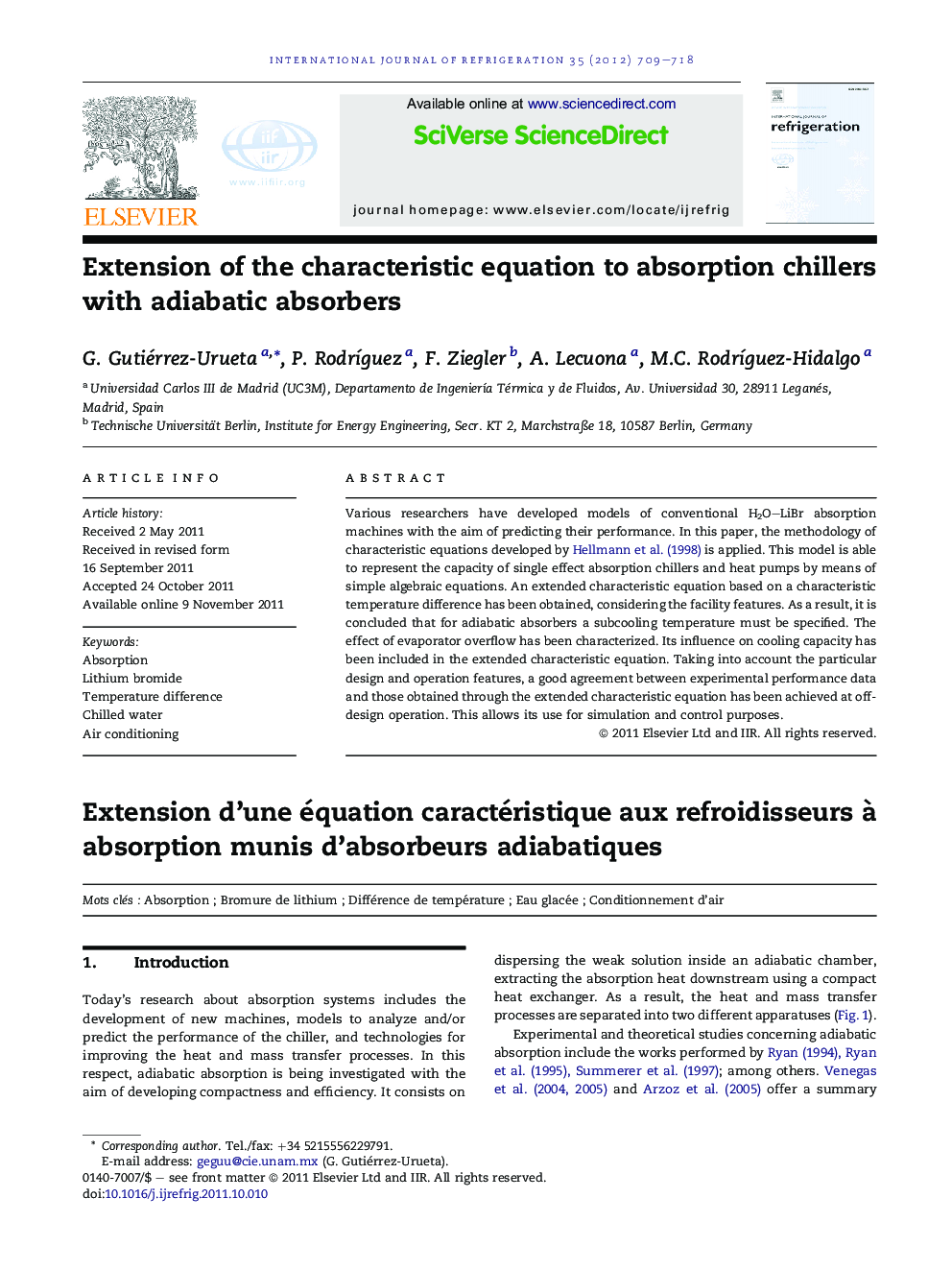| Article ID | Journal | Published Year | Pages | File Type |
|---|---|---|---|---|
| 787136 | International Journal of Refrigeration | 2012 | 10 Pages |
Various researchers have developed models of conventional H2O–LiBr absorption machines with the aim of predicting their performance. In this paper, the methodology of characteristic equations developed by Hellmann et al. (1998) is applied. This model is able to represent the capacity of single effect absorption chillers and heat pumps by means of simple algebraic equations. An extended characteristic equation based on a characteristic temperature difference has been obtained, considering the facility features. As a result, it is concluded that for adiabatic absorbers a subcooling temperature must be specified. The effect of evaporator overflow has been characterized. Its influence on cooling capacity has been included in the extended characteristic equation. Taking into account the particular design and operation features, a good agreement between experimental performance data and those obtained through the extended characteristic equation has been achieved at off-design operation. This allows its use for simulation and control purposes.
► The methodology of characteristic equations developed by Hellmann et al. is applied. ► An extended characteristic equation was obtained considering the facility features. ► For adiabatic absorbers a subcooling temperature must be specified. ► The influence of evaporator overflow was included in model. ► Good agreement of experimental and modeled performance at off-design operation.
